It Keeps Getting Better: 2015 Scion FR-S Manual With TRD Parts, Reviewed

If the Scion FR-S seems familiar to you, it should, as this will be our second review of the car at Neon Tommy. Why a second time you ask?
It starts with this: the first FR-S we reviewed was equipped with an automatic transmission, seriously hindering its overall potential. For one, the tall gearing made the car slow and ungainly, and didn’t take full potential of the engine. And even with Sport mode engaged, shifts were slow and brought down the whole car withs its performance. It felt so far out of sync with the car that it negatively impacted its performance and score significantly. As a result, it was a slow, impractical, expensive and uncomfortable car.
Today, the model we're reviewing has been replaced with a manual transmission, and we set out to answer one big question: is the FR-S with the manual transmission faster than the automatic? The answer is yes, one hundred times yes.
The difference between the two cars is night and day. The FR-S pulls very hard in the lower gears, but the lack of low-end torque makes the car feel less powerful than our benchmark car, the Honda Civic Si Coupe.
SEE ALSO: 2015 Scion FR-S Automatic, Reviewed
Thanks to the new gearbox, not only can you accelerate faster, but you can take advantage of the stronger engine braking and have a closer connection to the car. The fuel economy does suffer due to the different transmission, as my average MPG for the manual was 25.4, compared to the automatic’s 26.9. The clutch has a high catch that makes it a bit tricky to use in lower gears, making stop-and-go traffic a chore.
This is where I’d normally stop the review, had the car been only equipped with a manual and no other differentials from the last FR-S we tested. Some things that didn't change: the backseats are still small, the ride is still stiff as a rock and the trunk is a sandwich-sized Ziploc bag. But my test vehicle was a TRD (Toyota Racing Development) showcase model, meaning that it came equipped with every TRD part available for the FR-S. Since TRD has produced some great parts before, I had high expectations.
The most expensive and significant upgrade you can get is the TRD performance exhaust system. It ditches the circle exhaust tips in exchange for D-shaped tips that have the TRD logo etched into them. Unless you’ve got a sharp eye, you won’t notice any difference between the TRD exhaust versus the stock exhaust, until the engine is fired up. At lower engine speeds, the exhaust emits a deep rumble, and when you let off the throttle at around 3,000 RPM, the rumble turns into a boom, letting off a loud, low-pitched drone. At 4,000 RPM and up, the exhaust noise becomes replaced with the glorious sound of intake roar.
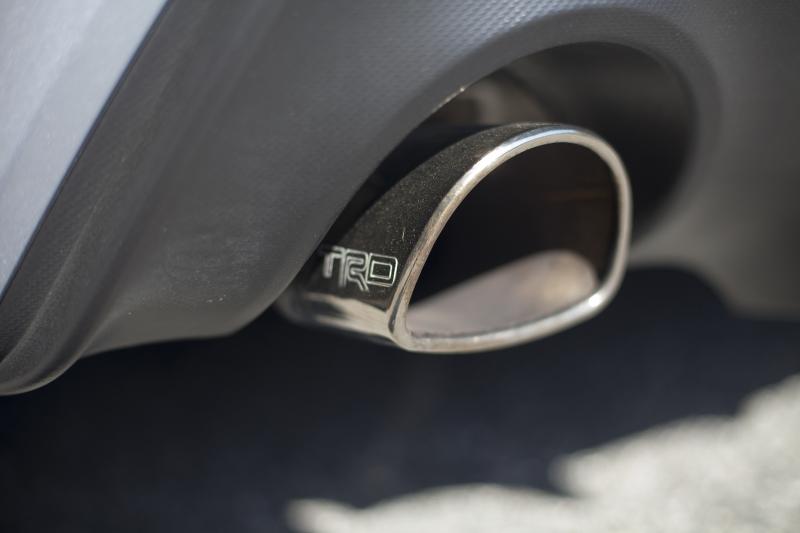
There are three drawbacks with the TRD exhaust, the first being that the pipe leading from the muffler is the lowest component on the undercarriage of the car. You’ll have to be careful when going over certain surfaces, as you can scrape the piping. The second problem is the considerable cost ($1100).
The third issue, which happens to be the biggest, is the noise you'll encounter on the freeway. An FR-S with the manual gearbox rotates at a higher mph in 6th gear, meaning that at 80 mph you’ll be sitting at 3400 RPM, right where the exhaust fills your ears with thick, generous slices of boomy exhaust. You might think it’s cool at first, but it gets old quick. The noise is also an issue if you’re playing music or have a passenger sitting beside you. Trust me, trying to hold a conversation while having the loud wails of liquefied dinosaurs channeled into your eardrums can be pretty difficult.
Right behind the TRD exhaust in pricing, at $259 per wheel, are the TRD alloys. Keep in mind that tires are not included for this price. On my test car, the stock Michelin Primacies were replaced with grippier Michelin Pilot A/S 3 tires. With these tires, the car can slingshot around corners at amazing speed without stepping out of line; speeds at which you’ll be thankful the FR-S bucket seats have bolsters large enough to keep you from falling out.
READ MORE: Taking SoCal By Storm: Tesla Model S 60 kWh Quick Drive

The third most expensive TRD part at $639 are the lowering springs, in my opinion the most pointless part in the entire catalog. The springs only lower the car by a barely noticeable inch, a miniscule effect in its overall appearance and handle. The ride quality was slightly improved, as the car no longer assaulted every nerve in my lower back, but for me, the springs weren't worth the price.
Following the springs are the TRD sway bar kit, which at $550, comes in fourth in terms of pricing. The kit includes both front and rear sway bars and easily bolts on, making installation a breeze. What little body roll the FR-S has is reduced to almost zero, but if you try very, very hard in the corners, you can give it a push. Keep in mind that at this level of cornering, it is possible to make the tires rub against the wheel arches, so you’ll have to work very hard to make body roll appear.
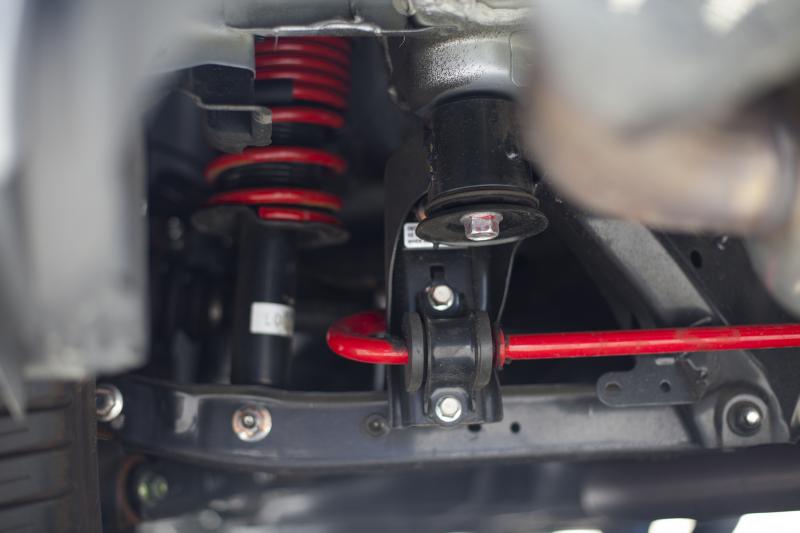
The fifth most expensive modification, which just happens to be my favorite, is the TRD Performance Intake. The whole airbox is replaced with a TRD-designed one and coupled with a low-restriction reusable air filter. Not only does the intake provide a power increase, but the roar at over 4,000 RPM sounds like an chainsaw operated by a swarm of angry bees. Of all the upgrades, this would be the one I most recommend.
Second to last is the TRD quickshifter, at $195 and only available with the manual transmission. The shift throws are greatly reduced, up to the point where I felt they were too short. I ended up missing neutral and threw it in 4th by accident the first day I had the FR-S. This was my second-least favorite modification, next to the TRD exhaust, and I would not order one on my personal FR-S. The TRD brake pads were the cheapest part of them all, a bargain at $70 for a set of four. The set installed on my car would occasionally squeak, but for the price, you can’t really complain.
Keep in mind that some parts offer a greater price-to-performance ratio and you may not like them all. I highly recommend the wheels, the TRD Performance Air Intake and the sway bar kit, but the other parts such as the brake pads, lowering springs, quickshifter and exhaust system are subjective to preference. You may find the exhaust’s loudness to your liking, and the quickshifter to have throws that are just right. Before selecting either the quickshifter or the exhaust, though, I'd strongly recommend you test drive a car equipped with those parts.
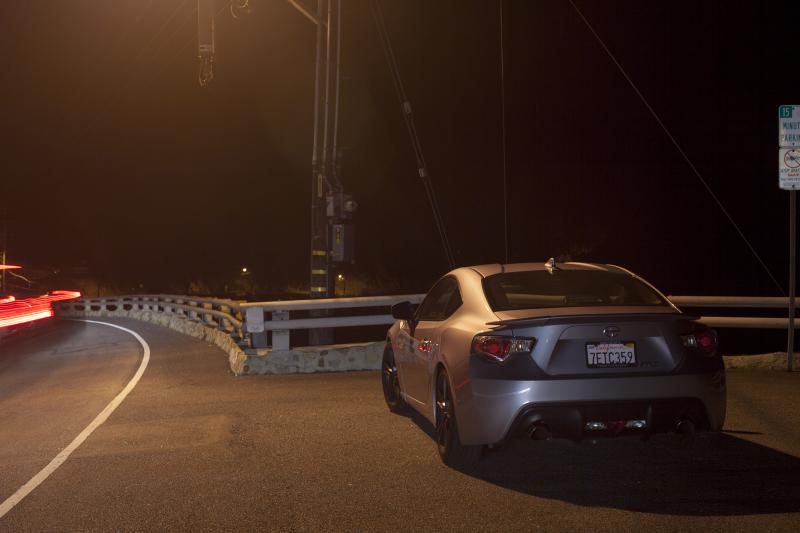
Besides the TRD upgrades, there were other factory options fitted as well. The bespoke audio system with navigation reared its ugly head once again to help me get lost. The rear spoiler, paint protection film, center armrest and rear bumper applique all crossed over from the last FR-S I had. In total, the TRD parts and options added up to $6,391, though obviously the price will vary by selections.
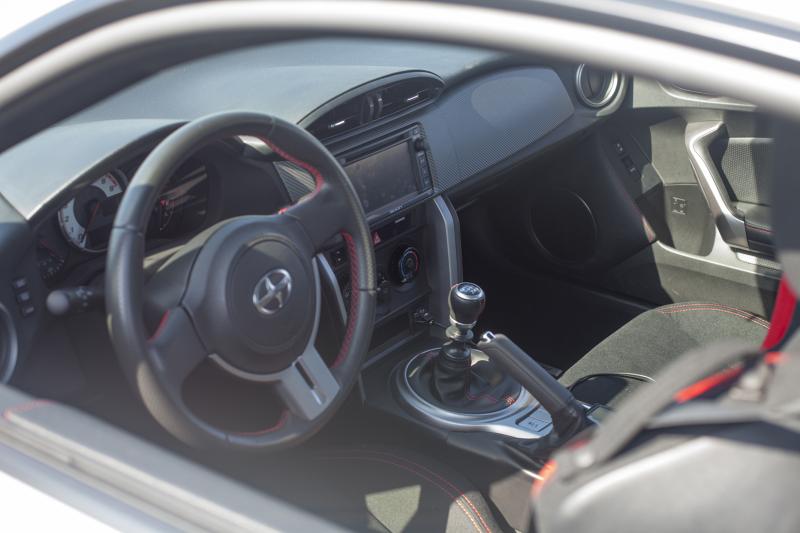
TRD has done a good job of providing a number of parts for the FR-S, but there is something I consider to be missing, which are the more serious upgrades. I’m talking about the roots superchargers TRD is famous for making: full suspension upgrades, big brake kits, aero kits, the works. Most of these TRD parts exist overseas for the FR-S’s twin, the Toyota GT86, so why can’t they be brought over here?
With all these parts and the manual gearbox, the FR-S is no longer the odd car I tested nearly a month ago. Yes, as I've mentioned, the trunk space is microscopic and the rear seats laughably small, but they seem small sacrifices in keeping the car agile as an acrobat.
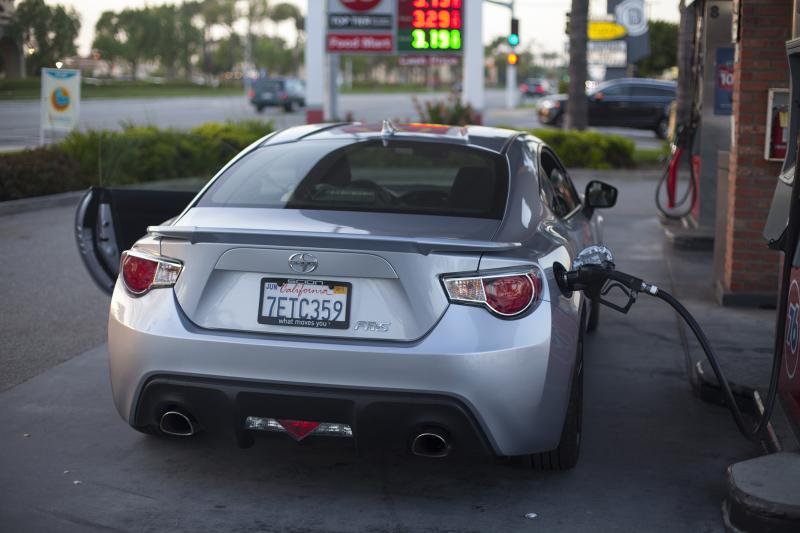
This is the first time in a long time I can say I drove a car that genuinely made me happy; a car that I just wanted to drive forever. I found myself at the pump twice, feeding the FR-S its share of high-octane gasoline. The weekend came and went, as I carved up the winding roads of Malibu and Mulholland Drive multiple times. My whole body ached from being in the car for so long, but let me tell you, every minute and drop of gasoline invested was well worth it.
I got up especially early the day I had to return the car to squeeze in one last drive. After dropping it off and heading back to USC in my own car, I was sad -- not just because it was Monday, but because I had lost a friend. And that’s probably the highest praise a car can get.
Overall Score: A-
Hot Cars under $40,000*: A-
Rear Wheel Drive Performance Score: A+
Price as Tested: $32,046
At-A-Glance Specifications
Engine: 2.0L DOHC 16-valve D4-S boxer-four with VVT “FA20”
Horsepower: 200 hp @ 7,000 RPM (more with modifications)
Torque: 151 lb-ft @ 6,400 RPM (more with modifications)
Transmission: 6-speed automatic or 6-speed manual (tested)
Tire Size: 215/40ZR18
Tire: Michelin Pilot A/S 3
Curb Weight: 2,758 lbs (Manual) +/- with modifications
Weight Distribution F/R: N/A
Cargo Volume: N/A
Our combined MPG: 25.4
Fuel Capacity: 13.2 gal.
MPG (EPA Estimated)(City/Highway/Combined): 22/30/25
*This car is the benchmark vehicle for this class.
Video by Amou "Joe" Seto and Jillian Littleton.
Reach Staff Reporter Amou (Joe) Seto here. Follow him on Twitter here.



